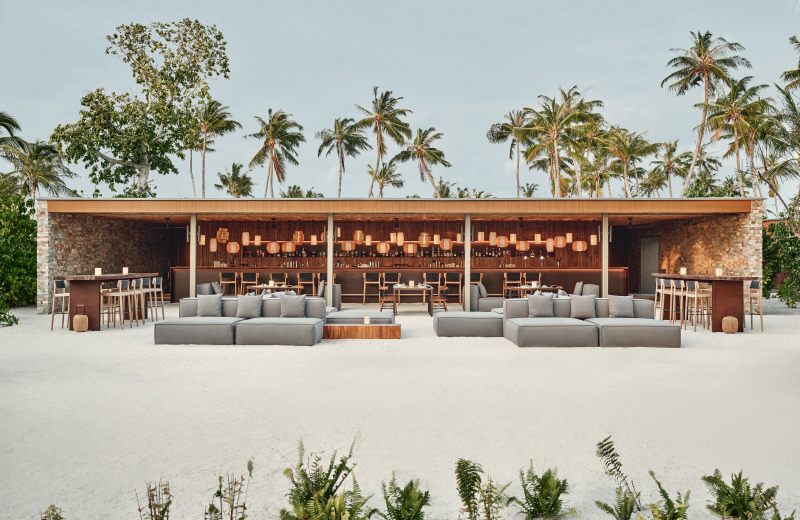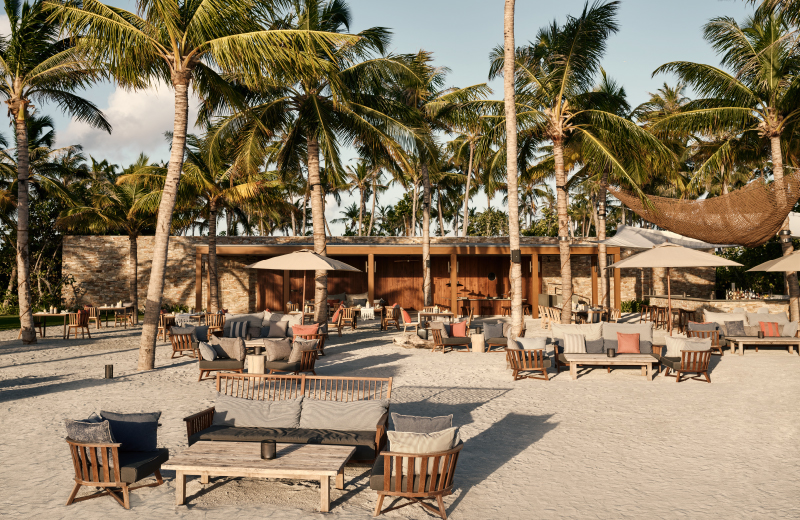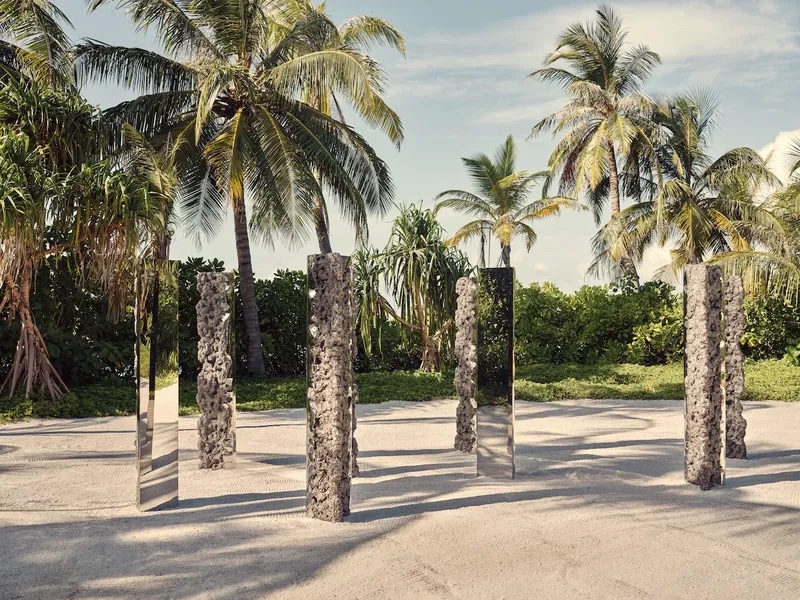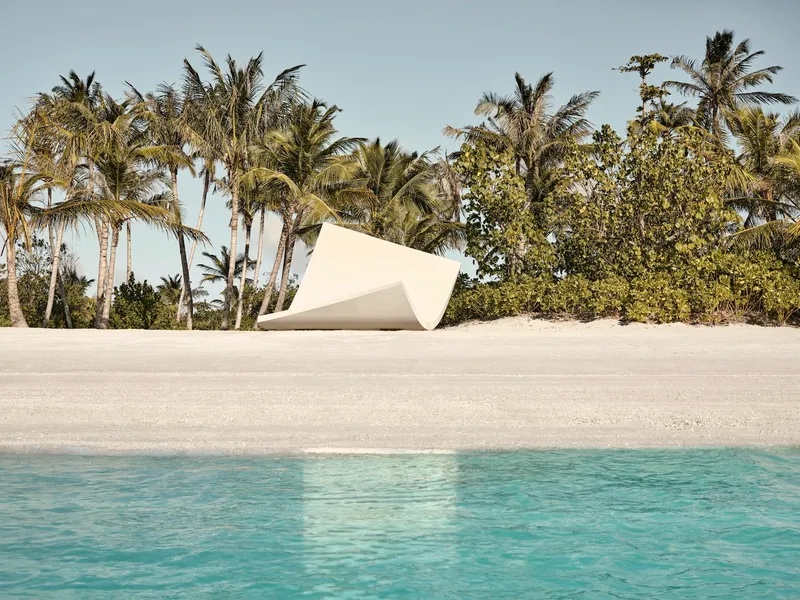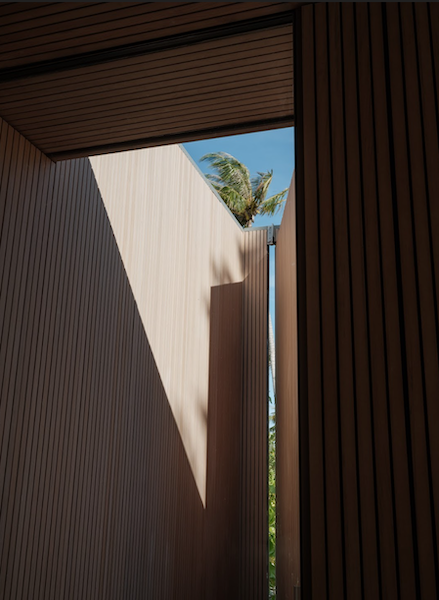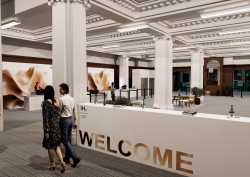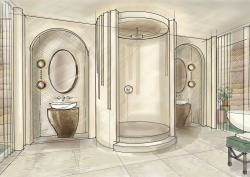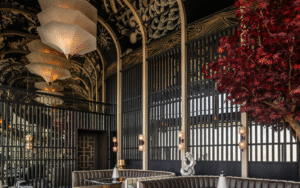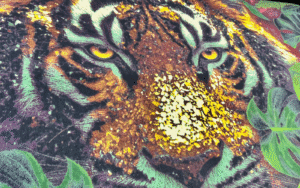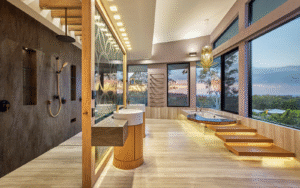The Maldives is as remote a tropical paradise as you can find on planet earth. Sara Darling took the duel-flight journey (plus a seaplane) to land into the heart of Patina Maldives, a sharply designed luxury hotel, which opened in the wake of the pandemic in 2021…
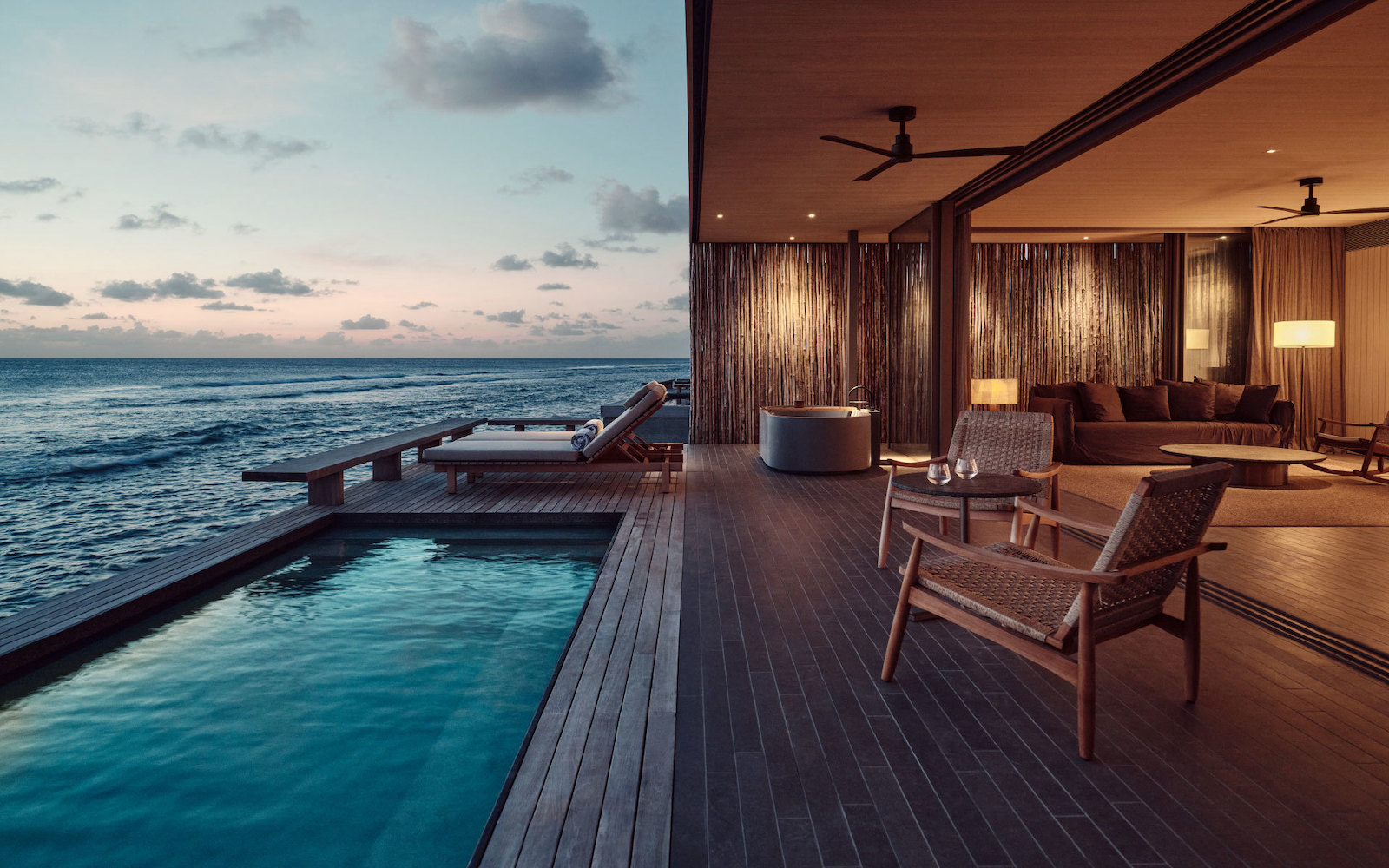
Just under 50 kilometres from Malé, which is the capital of the Maldives, Patina Maldives is a 90-key resort that is spearheading new trends, in both design and hospitality, in the region known for its luxury experiences.
The hotel is the brainchild of luxury hotel powerhouse, Singapore-based, Capella Hotels & Resorts, and it has ensured that every aspect of the build works seamlessly with the landscape to create accommodation and public areas that harmonises with the surrounding Indian Ocean. Designed by Brazilian architect Marcio Kogan, from Studio MK27, the resort has been created to evoke a deep sense of calm; an oasis that retains a deep connection with nature yet still incites social encounters.
Creating a temporary home amongst the natural hues, wildlife and open skies, the goal to create a resort that is respectful to its surroundings, yet captures and amplifies the landscape, has been achieved by low-rise buildings that are cosy and unpretentious, and never break the skyline. Patina’s beachside villas are simple structures, which are designed to maintain privacy by staggering them from one another, shrouded in vegetation and on different elevations; whilst the overwater villas are encased in a vegetative shield to ensure total seclusion as a reminder that you are in a tropical paradise.

Image credit: Patina Maldives
Inside the rooms, every guest is blessed with simple, unpretentious furnishings, complemented by natural tones and dark wood. The oversized bed with slate grey bedding faces the ocean, and there’s no need for a TV or complicated media system. Instead, celebrating all things analogue, each villa boasts a commissioned photograph by renowned Brazilian photographer Cássio Vasconcellos, whose interpretations of flora and fauna complement the ethos of living with nature.
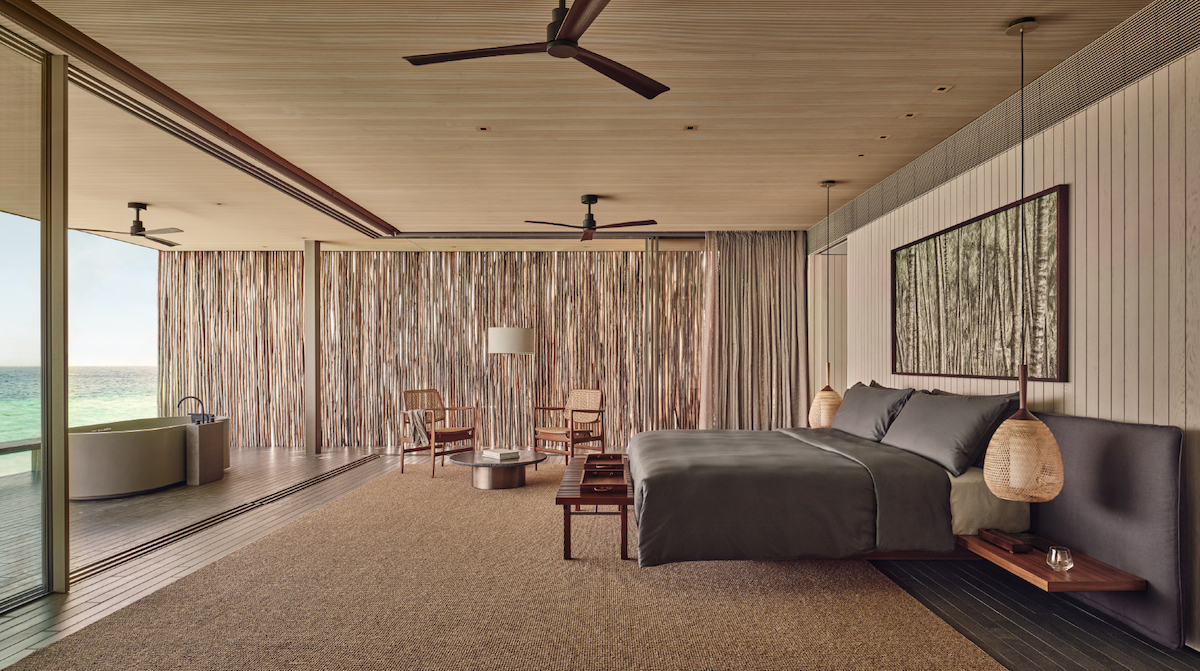
Image credit: Patina Maldives
Further exclusive touches, which actually allow the resort to find its own authentic lane, are the large artworks that dot around the island. Guests are welcomed by a six-metre-wide textile by Hiroko Takeda, a New York based artist who was commissioned to express the colours and fragile ecology of the island setting. Whilst in a clearing amongst the palm trees, Netherlands-based Chinese artist Hongjie Yang has installed a series of eight-mirrored columns that have been designed to immerse viewers in reflections not only of themselves, but their natural surroundings.
However, the most prominent work of art on the island is arguably the Skyspace Pavilion, a signature piece by James Turrell. A member of the California Light and Space movement since the 1970s, Turrel uses natural light as a tangible material to create immersive art.
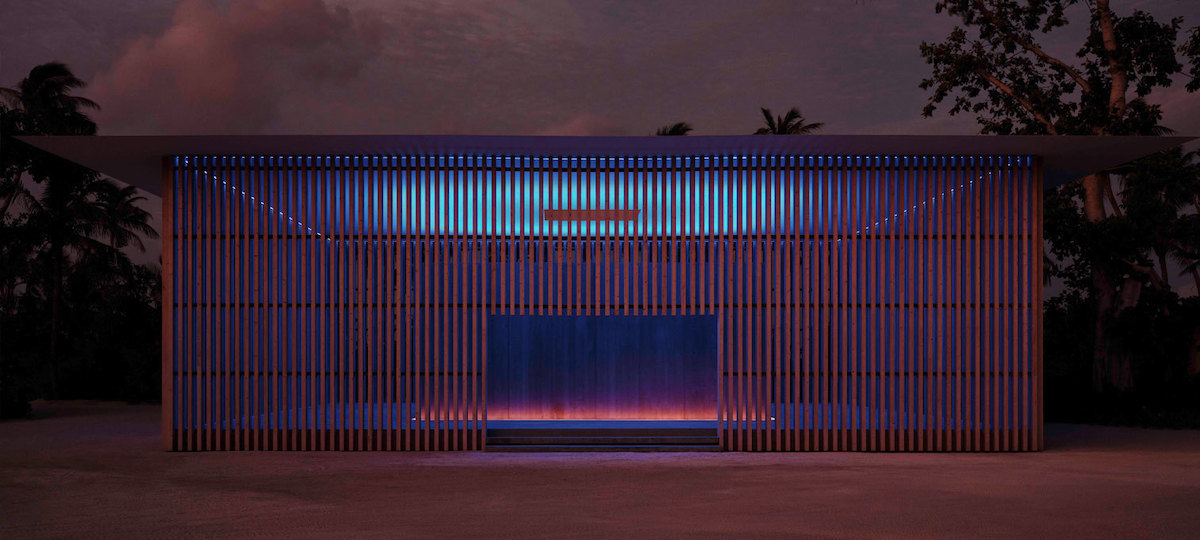
Image credit: Patina Maldives
Here, the open ceiling frames the skyline in such a way that it appears to be within reach. Hidden lights within the Skyspace subtly shift the viewer’s perception of the sky’s colour, distance, shape, and density. Even the exterior walls are made of vertical wooden slats, designed to add a dance of shadows that continuously change throughout the day.
With a commitment to sustainability, each villa has solar panels as well as energy saving heating and cooling systems: by connecting the AC system to the water tanks, for example, so that the two can simultaneously heat and cool each other.
The hotel’s drinking water is processed and bottled by the island’s Nordaq plant, a patented Swedish water filtration system, and there are plans in place to have solar energy provide 50 per cent of the resort’s energy needs by 2030. Single-use plastic is almost entirely eliminated: plastic bottles are replaced with reusable ones, and all bathroom products are organic and refillable. Food waste is composted, and there is a pro-active marine conservation programme and guests will be invited to regular beach clean-ups with plastic waste being turned into Parley ocean plastic material. With a pioneering coral propagation programme, a collaboration with the Olive Ridley Project which works on sea turtle rehabilitation, the resort will donate one per cent of its gross profit to local women’s and children’s charities. Even the kid’s club is solar powered, and attendees will be invited to turn recycled ocean plastic into models using 3D printing.
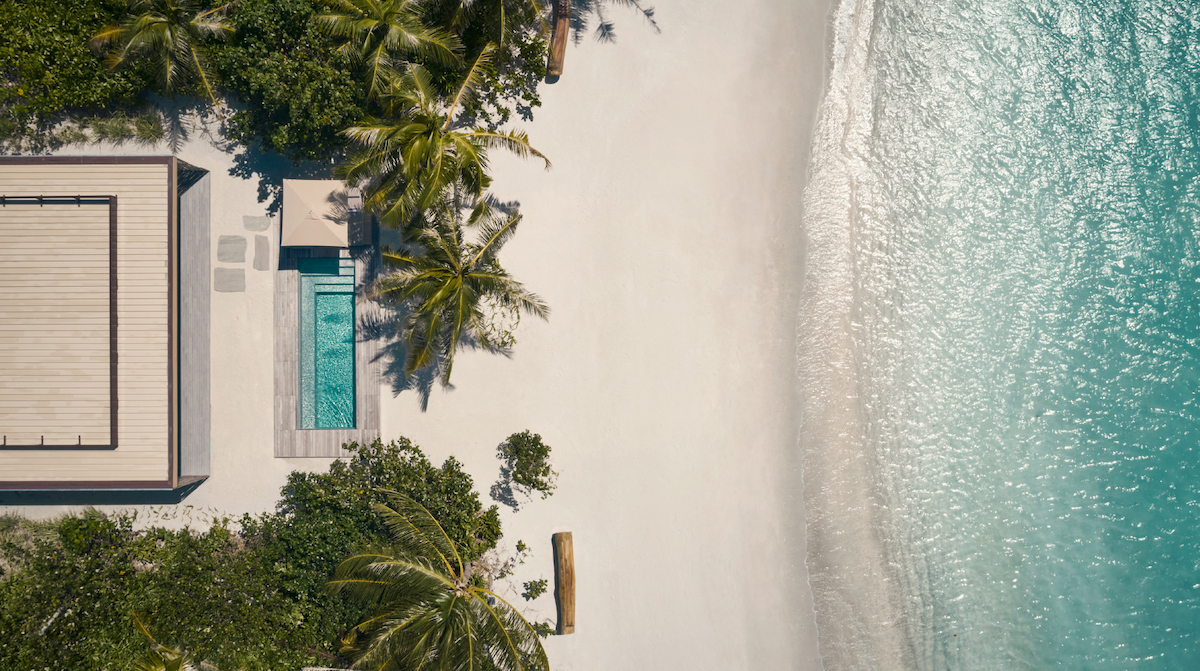
Image credit: Patina Maldives
Although it’s a tropical playground, it’s also a magical paradise for rest and recuperation, and Patina has nailed this with contemporary design, earthy colour scheme and tactile textures that create a dialogue with nature.
> Since you’re here, why not read our review of Gili Langkanfushi, which is a very different, kind of shipwrecked, vibe in comparison to Patina?
Main image credit: Patina Maldives




